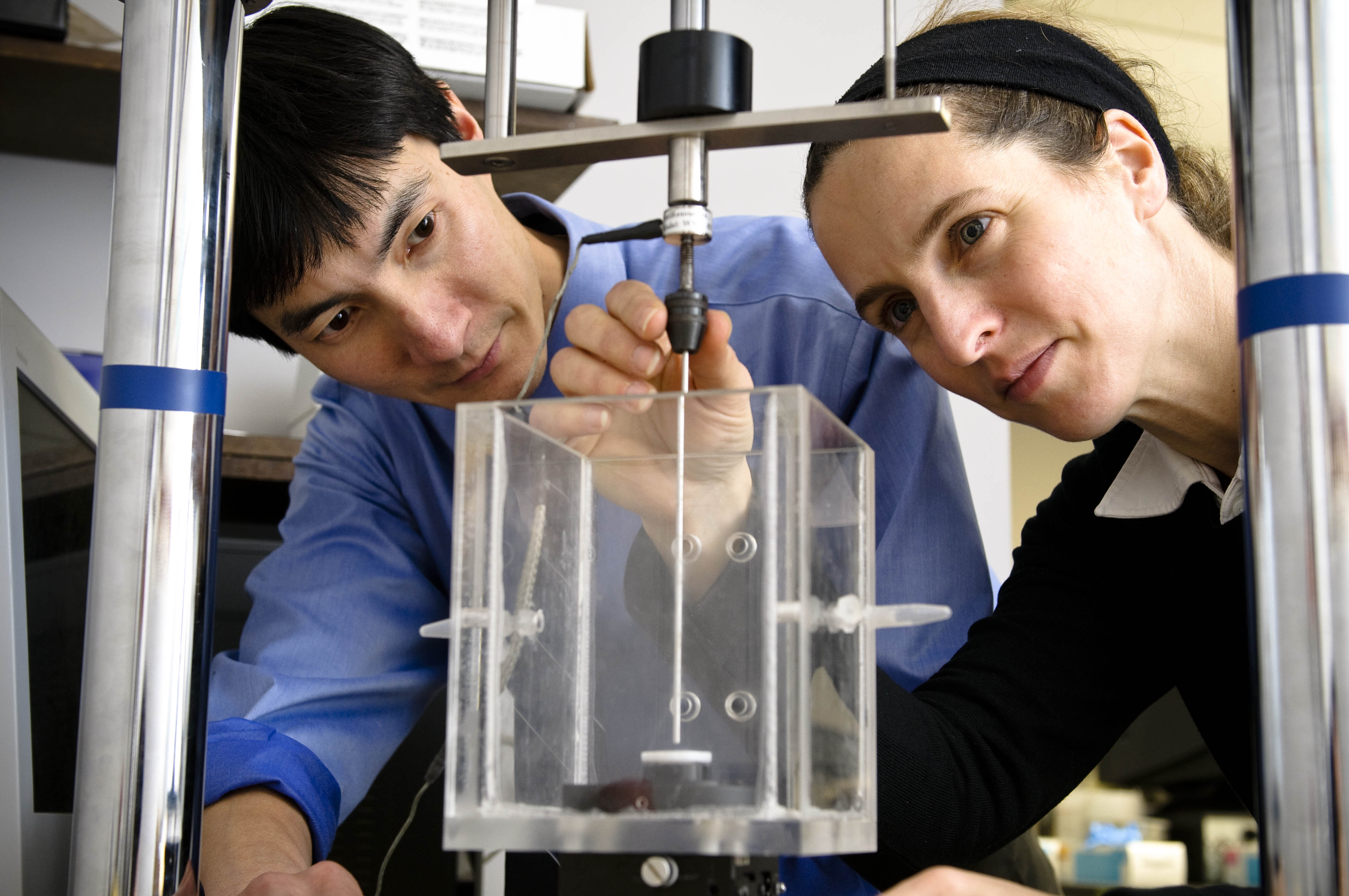Researchers To Explore New Treatments for Fractures
By Jim Oldfield
The U.S. Army Medical Research and Materiel Command has granted musculoskeletal scientists at Sunnybrook Research Institute (SRI) two hypothesis development awards totaling $288,000 US.
The grants will fund research on a novel method for stabilizing traumatic bone injuries of the face and skull, and a treatment to enhance long-bone fracture healing.
"The funding climate right now is difficult, particularly for operating grants, so these awards are a nice surprise," said Dr. Cari Whyne, director of the Holland musculoskeletal research program at SRI, and principal investigator and co-principal investigator, respectively, on the two grants.
For the craniofacial study, Whyne and her colleagues will develop a new method for bony reconstruction that may provide a unique combination of mechanical strength, ease and flexibility of application, and cosmetic subtlety. The researchers will then test the biomechanical strength of the implant-bone constructs.
"Craniofacial surgeons face many complex structural problems, and their methods for dealing with them are limited, in part because the bones are often very small, thin and three-dimensionally complicated," said Whyne, who is also an associate professor at the University of Toronto. "They can't use thick plates and screws as they do with long bones, and current surgical procedures often fail to sufficiently stabilize the bone, which is necessary for healing."
The work will be an early-stage investigation of feasibility. "The study is high-risk in the sense that it may not work, but if it does work, it could transform how we treat craniofacial fractures," said Whyne.
Dr. Margarete Akens, a junior scientist in SRI's orthopaedic biomechanics laboratory, will lead the second grant. Akens, Whyne and their Sunnybrook colleagues will test a new way to improve healing in long-bone fractures, which account for 25% of extremity combat wounds and are a common injury in civilians. These fractures can take up to one year to heal, and as many as one in 10 don't mend completely, often resulting in repetitive surgeries and long-term disability.
The researchers will investigate a combined drug-light technique called photodynamic therapy (PDT). This technique has garnered considerable attention recently as a treatment for cancer and other conditions because it is nonsurgical, minimally invasive and localized: a latent "photosensitizing" drug is injected directly into the tumour or wound area or via intravenous, then activated by laser light.
Scientists are beginning to overcome a long-standing obstacle to implementing the therapy—limited penetration of tissue by laser light—with new LED technology and needle-delivery methods, sparking a surge of interest in the technique.
"In doing work on spinal metastases, one of our unexpected findings was that PDT not only kills tumours, but it [also] structurally augments bone," said Whyne. "And it's been shown to have a positive effect on infection, which can be a problem in long-bone fracture healing. So it's potentially a great way to help patients with long-bone fractures that aren't healing."
Having recently returned from a Canadian Institutes of Health Research grants panel, where finite funds will likely not cover the large number of good proposals, Whyne was especially grateful for the awards from south of the border. "It's a great opportunity if your research aligns with the army's priority areas, and musculoskeletal trauma is important to the military," said Whyne. "That said, they fund research on many different diseases and injury states—and they're open to anyone, anywhere in the world."
Infrastructure support for Whyne's research was provided by the Canada Foundation for Innovation and Ministry of Research and Innovation.






